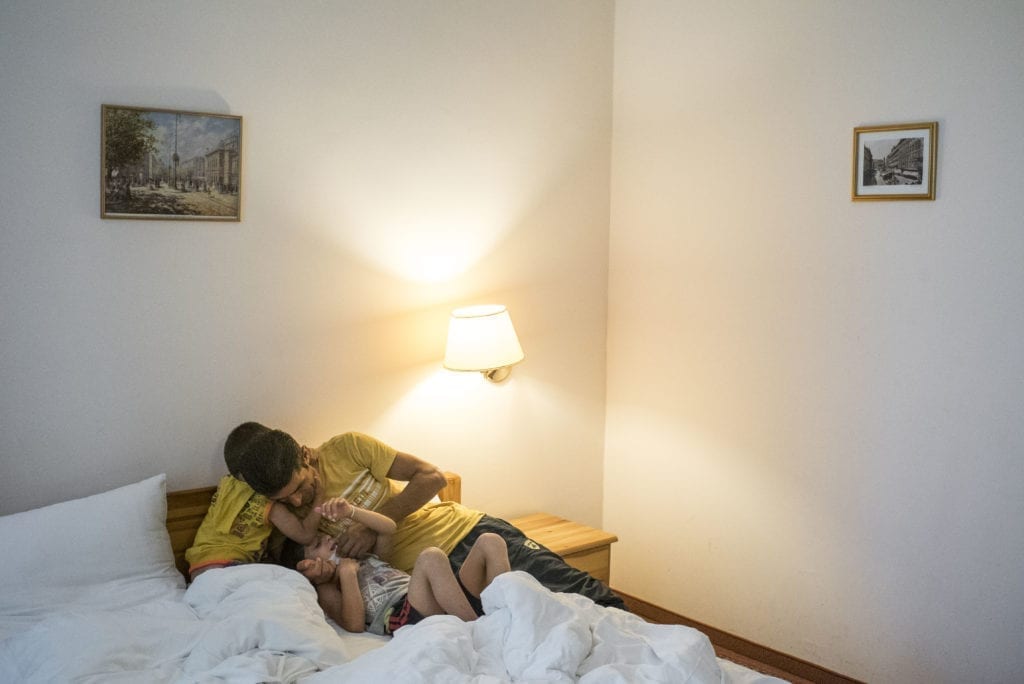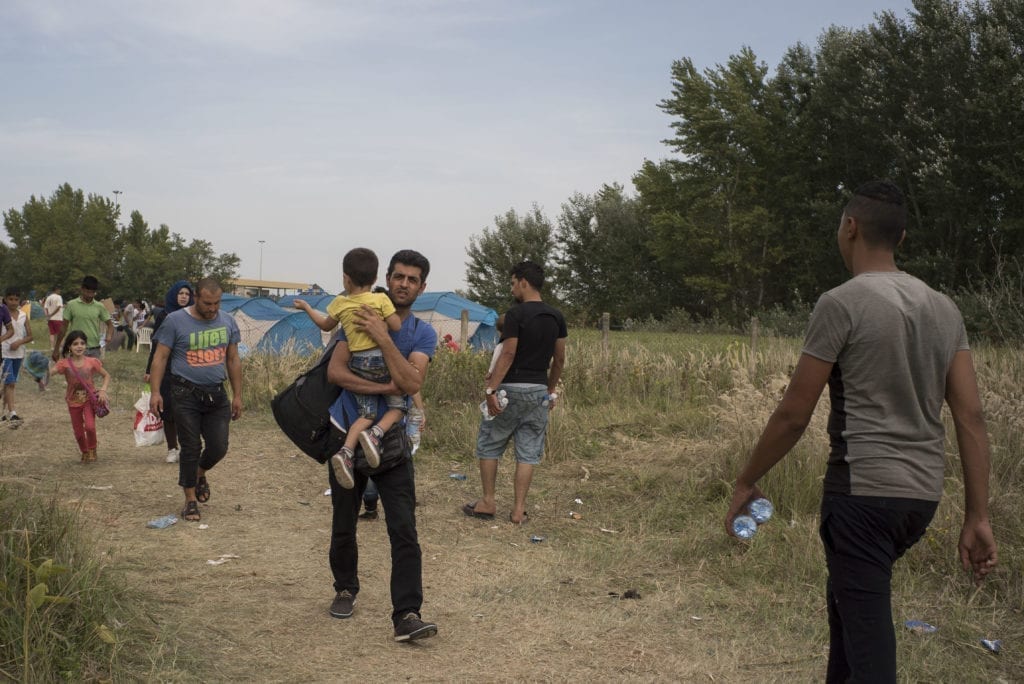BJP: What did you want to achieve with these images?
PvA: Most of the images coming out of the refugee trail were hyper-dramatic images of scared looking people jumping off of rafts. The crossing was a tiny portion of the experience, and utterly over-emphasised by the media. Our hope was to craft a story that was a bit more intimate, sober, contextualized, and thoughtful. I covered the story with Alia Malek, who is a Syrian-American writer who lived in Damascus for years during the civil war and is very knowledgeable about the Arab diaspora experience, in addition to being a fluent Arabic speaker. I knew this combination of qualities was going to allow us to have a far more intimate experience than most journalists and wanted to retain the flexibility to follow our instincts.
BJP: What does it add to follow an individual family?
PvA: Refugee crises are usually seen on a macro and detached scale, with endless images of hordes of anonymous victims in pain and misery trudging forward. After ten years in and out of the Middle East, I didn’t want to contribute to this objectifying narrative. I have too many smart Arab friends who feel bitterly betrayed by the Western press.
BJP: How did you find the people that you photographed? How did you get them to agree to be photographed?
PvA: We met them on our first day at a cheap pension on the island of Kos. I was out for a walk and Alia heard some people in the garden speaking Syrian-inflected Arabic. She struck up a conversation and after a few hours of chatting agreed to have us accompany them through Europe.

PvA: We stayed with the one group consisting of Mohammed, Sawsan and their three young children as well as Muhanid, a single man who knew Mohammed from Latakia, and a young teenager who had been abandoned and Mohanid had taken under his wing. Another group of four we had met at the pension tried their luck with fake documents. Two got through, and two were forced to go along the land route. We rented a car in Greece and followed the group. A lot of the transport was for refugees only and they moved very quickly and often through the night so the only way we could keep pace was to have our own transport. That made for some incredibly exhausting days and nights. Sometimes the best we could do for sleep was a few hours in the parking lot of a gas station. We stayed in touch via phone and WhatsApp as we’d often get separated in the chaos. Up to 10,000 people were moving across each border per day when we did the journey.
BJP: Some of the images are really beautiful – did you think about a certain look or aesthetic in your work?
PvA: I never pre-conceive how I want the work to look. Every situation is different and I am confident that I will be guided by the moments that present themselves. Overall I wanted the pictures to capture the gravitas and scale of the migration while being personal to the stories of the individuals. Obviously that’s very difficult to do in the confines of a traditional photo essay.
BJP: Some of the images show more hopeful moments such as the family in a hotel. What does including images like this do in the story?
PvA: There was an enormous feeling of relief after crossing into Austria. It had been a tough and exhausting journey with a number of hiccups along the way and everyone was desperate for a clean bed and a shower. The West always seems to be searching for a triumphant collective narrative about our own exceptionalism, instead of seeing ourselves in others, and taking stock of how our own political decisions enormously contributed to this mess in the first place. I love journalism, but it often seems to be more of a de-contextualized litany of horrors than a thoughtful and self-critical analysis.

PvA: We had met them at the pension in Kos, but they decided to try their luck with fake documents. We stayed in touch with them because we liked them tremendously and I have a particular fondness for her 14-year old brother, Yussef, who reminds me a lot of myself at that age.
BJP: Did you encounter any other photographers?
PvA: We encountered a huge number in Tovarnik, Croatia on the first day the Croatian border was open, after Hungary had shut down their crossing. The day was miserably hot and confusing, and many of the refugees quickly tired of cameras in their faces. They generally remained polite though, more polite than some of the photographers who clearly saw the refugees as pictures rather than people.
BJP: Did you encounter any problems shooting the people making their way along this route?
PvA: There were always plenty of people that didn’t want to be photographed. I’d try and respect their wishes and apologise.
BJP: What was your impression of these peoples’ plight?
PvA: No one leaves their home with their children to risk a dangerous crossing and a new life in a country where they can’t speak the language if they have other options. I felt a huge sadness that a great country like Syria could dissolve into such horror and a huge anger at my own country for creating many of the factors that directly led to this chaos. I felt a more general anger at the course of the last 100 years and the exploitation that Syria has faced both internally and externally since the fall of the Ottoman empire. Alia is very passionate and knowledgeable about this history and traveling with her was a powerful and sobering history lesson.
BJP: How long did you shoot along this route for, and do you intend to keep going?
PvA: I think about three weeks. We followed up with everyone in March (they are now scattered across Sweden, Holland and Germany) and hope and intend to keep following their story for years. The refugee trail is only the first chapter of their story. Hopefully we follow this story for years to come.
Buzzing at the Sill by Peter van Agtmael, the sequel to his award-winning photobook Disco Night Sept. 11, will be published by Kehrer this Autumn. Find out more here, and see more of Peter’s photography here.
